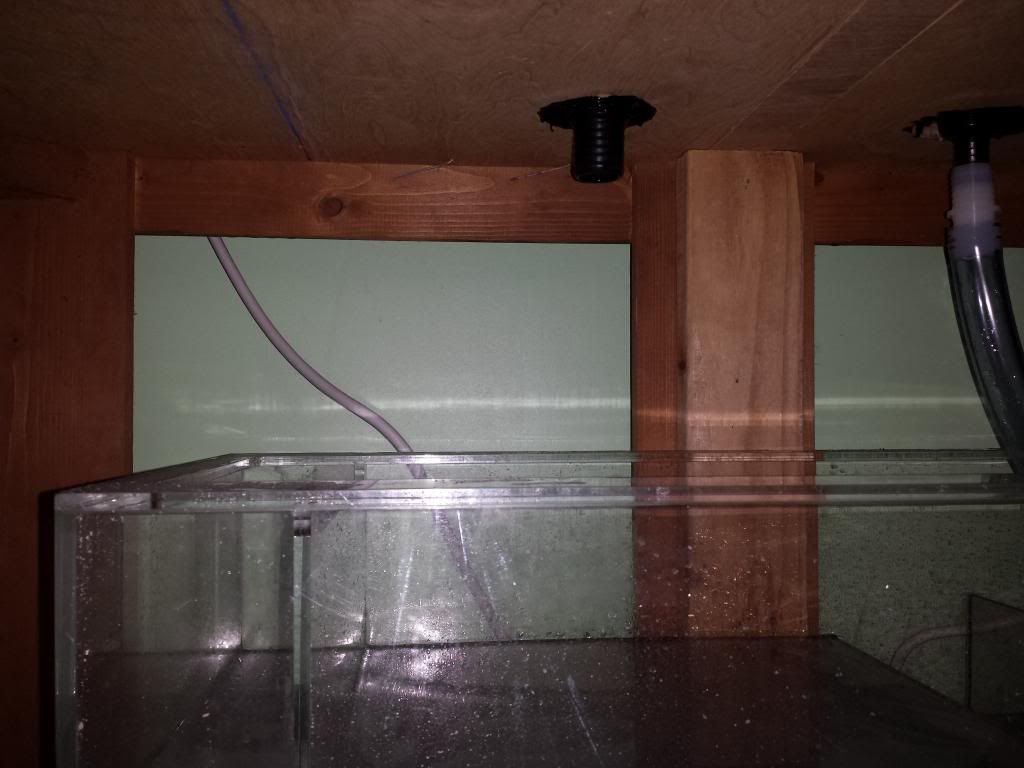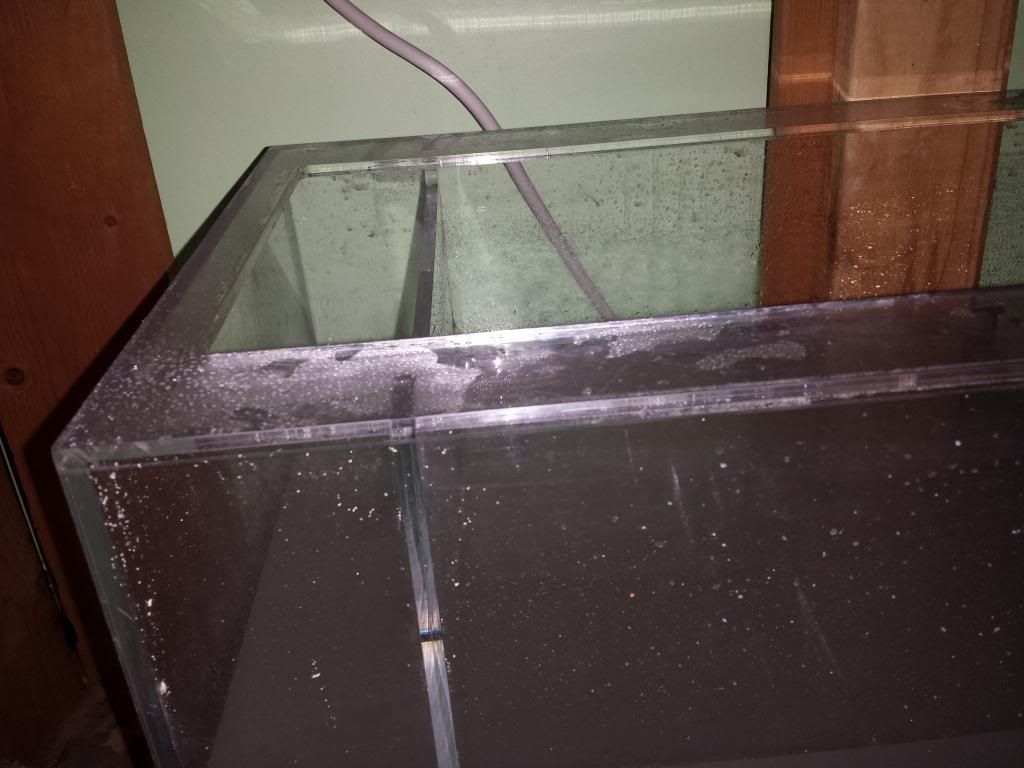reefle
Active Member
Hey all,
I just got my 100 gallon tank up but I'm still trying to figure out the overflow.


So from the first picture you can see where the overflow outlet is. It's only 1 inch across
The second picture you can see the compartment in the sump where its supposed to go into. This is only about 2 inches wide.
In my return section I have a pump that is rated at 900 gph.
There is about a foot between the top of the sump and the bottom of the return overflow.
I had some stupid plumbing tube that was 3 feet long and had to snake its way into the sump and when I tried using the overflow the whole thing was this bubbling/blurping monster. scared the crap out of me. So my next question is, what do you guys suppose I do?
1. Is my 900 gph return pump too powerful for my overflow pipe thats only 1 inch across?
2. How do I stop the blurping and bubbling from the overflow tube.
3. How should I set up a tube from the outlet into the sump?
helpful links, pics, posts, or paragraphs are all appreciated
I just got my 100 gallon tank up but I'm still trying to figure out the overflow.


So from the first picture you can see where the overflow outlet is. It's only 1 inch across
The second picture you can see the compartment in the sump where its supposed to go into. This is only about 2 inches wide.
In my return section I have a pump that is rated at 900 gph.
There is about a foot between the top of the sump and the bottom of the return overflow.
I had some stupid plumbing tube that was 3 feet long and had to snake its way into the sump and when I tried using the overflow the whole thing was this bubbling/blurping monster. scared the crap out of me. So my next question is, what do you guys suppose I do?
1. Is my 900 gph return pump too powerful for my overflow pipe thats only 1 inch across?
2. How do I stop the blurping and bubbling from the overflow tube.
3. How should I set up a tube from the outlet into the sump?
helpful links, pics, posts, or paragraphs are all appreciated

